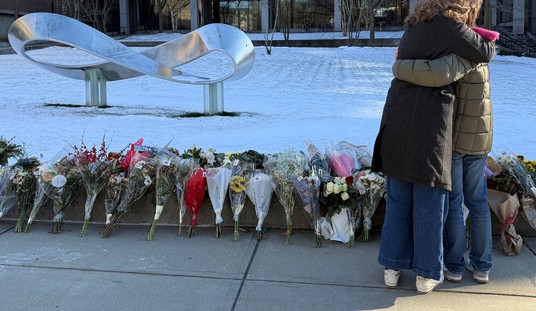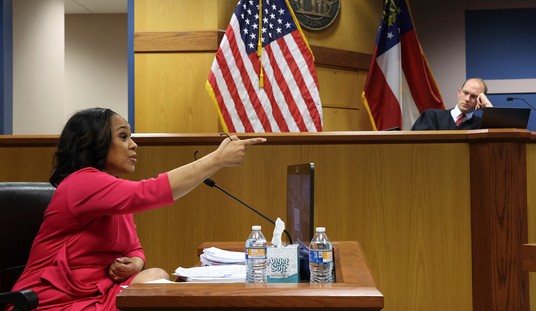TEL AVIV AND JERUSALEM — Tel Aviv is the perfect bohemian city: secular, cultured, youthful, compact, hip, and ideally situated on the shore of the Mediterranean.

It is the opposite of spectacular and glitzy. This city has not been to finishing school. It’s worn around the edges, slightly seedy in the corners, and refreshingly not as Western or California-like as expected.

Tel Aviv has been described as the Miami of the Middle East, which it sort of is. But only for one street along the beach.


The rest of the city is Beirut with Jews and (slightly) fewer machine guns.


Restaurants, art galleries, cafes, and bookstores dominate the core of the city. There are some old folks around, but for the most part it has been colonized by young urbanites.




It’s Greenwich Village on the beach. But it’s Greenwich Village on the beach in the Middle East. Beirut may be similar, but there’s nowhere else in the world exactly like it. Benjamin Kerstein in Beersheva told me about a picture he once had of a guy wearing a long-haired blonde wig and a pink tutu with a machine gun slung over his shoulder. “That’s Tel Aviv,” he said.
The city is 97 years old. It’s not only young for the Middle East, it’s young for the world.

There aren’t many old buildings around, but there are a few. Some really leapt out at me. This one below could easily have been in Beirut.

I have no nostalgia, if that is the word, for the Ottoman Empire. But it’s still sad to see physical evidence that Israel and Lebanon were recently (more recently than the founding of young Tel Aviv) more or less part of the same “country,” to use the word loosely. You could drive from Beirut to Tel Aviv in four hours if the border were open. But today the two cities might as well be on opposite sides of the moon.
Only a naif would believe that the peoples of the Levant — who today think of themselves as Israelis, Palestinians, Syrians, and Lebanese — all felt like they belonged to one happy empire under the rule of the Ottomans. They didn’t. It just seems worse somehow now. The Israeli-Lebanese border is as inviolable as the Berlin Wall during the Cold War. (At least Lebanese and Israelis can go around it. No one is being kept in.)
The freshly constructed wall between the Israelis and Palestinians isn’t inviolable, but it’s yet another hideous wall of partition. Tiny formerly-Ottoman countries are still being sliced into even tinier countries and statelets based, more or less, on ethnic identity. It happened in Cyprus. In happened in Yugoslavia. It almost happened in Lebanon. It might happen soon in Iraq, and it already has happened informally in Iraqi Kurdistan. And it’s happening in Israel and Palestine now. While Europe moves to integrate its parts into a peaceful multinational federation, the Middle East still hasn’t finished breaking apart.
From the center of Jerusalem you can see the wall that divides Israel from what will someday — faster, please — officially be known as Palestine. Part of Jerusalem itself is on the other side of the 1967 Green Line which divided Israel from what was then Jordan.

Tel Aviv is cool. Tel Aviv is fun. Jerusalem isn’t fun. There is too much Reality in Jerusalem for it to be fun.
The city is ground zero in the Israeli-Palestinian conflict. There were far more suicide-bombings there during the intifada than in Tel Aviv. This is partly due to Jerusalem’s proximity to the West Bank. It’s just an easier target. But it’s also more contested than Tel Aviv. Liberal and moderate Palestinians who don’t wish to destroy Israel still want East Jerusalem as the capital of their future sovereign Palestinian state.
But most Arabs who live there now don’t want to belong to a Palestinian state. They prefer, for the most part, to remain Israeli.
Jerusalem is stressful and unnervingly borderless, even with the wall up and in place. Some Israelis feel an existential dread in that city. “Jerusalem is a terrifying place to spend a lot of time in,” Benjamin Kerstein said over coffee. “There is so much tortured history and conflict.” He told me the city would be twice as intense for me if I could read the sometimes bloodcurdling Arabic and Hebrew graffiti.
I felt plenty of tension, though, partly because Benjamin put me in the mood to feel it, but also because the conflict is so much a part of what the place is.
I met Noga, a friend of a friend, for dinner. We sat at an outdoor table in front of the restaurant. She told me there were thirteen active terror alerts at that moment. Thirteen suicide-bombers were thought to be heading toward Jerusalem. Only two had so far been caught.
I swallowed hard and then did my best to blow it off. I’m more likely to be killed in a car crash, I thought. Which was true. No one exploded themselves in the city that night. But threats of that sort hang over the place all the time.
One of the restaurants and one of the cafés I visited had earlier been destroyed by suicide bombers and later rebuilt. These were just two places I went at random, and I just happened to discover later by chance that they had been blown up during the intifada.
I didn’t get to spend much time in the city — or in the country for that matter — but I did get to wander around a little bit.
Jaffa Street is one of the main arteries through Jerusalem outside the old city. Even this relatively newer part of town is much older than Tel Aviv.

Pedestrian-only streets branch off Jaffa and make for a European-like section of town packed with shopping and outdoor cafes.



The city is lovely and golden at night. This part of town feels at peace with itself.



The old city doesn’t so much. It, too, is lovely. But it also is eerie.

From a distance it looked impossibly ancient, like it must have back in the days of the Crusaders or even earlier.

Hardly anyone was out walking around even at 10:00 at night. The old city is a day place. At night it is almost completely abandoned. Occasionally I did see other people. They always seemed slightly shifty to me, as I must have to them. Even today people are occasionally stabbed to death inside the old city walls during the night. The intifada takes many forms.

I walked the ancient streets lined with the closed shutters of shops. The merchants had all gone home. Tourists were back in their hotel rooms or at restaurants and bars in modern Jerusalem. The old city was left to itself. It was mostly just me, the bricks, the stones, and some ghosts.
The narrow passages, the stone walls, the stairs that twist around corners…these places are thousands of years old, older than Christianity. Jerusalem makes most places in Europe seem spanking new like Los Angeles or Vancouver by comparison.
I couldn’t tell you when and where I crossed the Green Line when I walked to the old city. It is unmarked by signs let alone an actual green line painted over the streets and the sidewalks. The old city is on the other side. It technically is not in Israel proper. It’s in East Jerusalem. Jordan ruled it in 1967. The Palestinians claim it today. Israel flatly refuses to hand it over to them.
What country is this place in? It is claimed and counterclaimed. Most of the world recognizes Jerusalem’s old city as belonging to no one in particular. During the day when the streets are packed with shopkeepers and tourists, questions like this are far away. But at night when no one’s around, being in a twice-claimed neighborhood with so very much beauty and history and tension feels totally crazy. There will be a lot more violence there in the future, for sure. You can’t stop it any more than you can stop an earthquake gearing up to explode from two tectonic plates that slowly but inexorably push against one another.
You could, I suppose, visit Israel and ignore all of this. You can loll on the beach in Tel Aviv and shop in the markets inside the walls of Jerusalem. You could visit the Dead Sea, the lovely Arab city of Jaffa, and wherever else you might want to go, blissfully tuning out all the history and trauma and pain. But frankly I do not see how.
If you head down to the Negev Desert — at least if you take the road I took — you’ll drive right past wretched, oppressive, unhinged, brutalized Gaza. You could try to pretend it isn’t there and keep your eyes fixed straight ahead. But good luck with that. If you have even a flicker of sympathy for Palestinian people, driving past Gaza will make you shudder.
It’s easier to ignore all these problems in Tel Aviv. Somehow it just feels apart. Even the graffiti and public messages are upbeat.



Jerusalem, though, is full of feel-bad graffiti and public messages.



Israel is a great country. And Jerusalem is a great city despite the conflict, the uber-controversial politics, the terrorism, and the anxious history bearing down on the place. I want to go back. Life is lived more intensely there than it is other places, just as it is in Beirut.
But Israel is a haunted country. It is not where you want to go to relax.
Israel is a country where, once a year, a loud siren sounds across the land. Everything and everyone stops. Anyone driving a car presses the brake, unlatches their seatbelt, and steps out into the road. Everyone stands there — the entire country at once — and collectively remembers the Holocaust.

Photo Copyright Lisa Goldman
“There is the Israel of the day and the Israel of the night,” Benjamin Kerstein told me. “During the day we’re living the good life on the Mediterranean. At night this is a country of nightmares.”
Post-script: Please help support non-corporate writing. Your donations today make tomorrow’s dispatches possible. Coming soon: reports and photos from the West Bank, plus interviews with those who lost the Palestinian election to Hamas.
[paypal_tipjar /]
City of Light, City of Dread

Advertisement








Join the conversation as a VIP Member